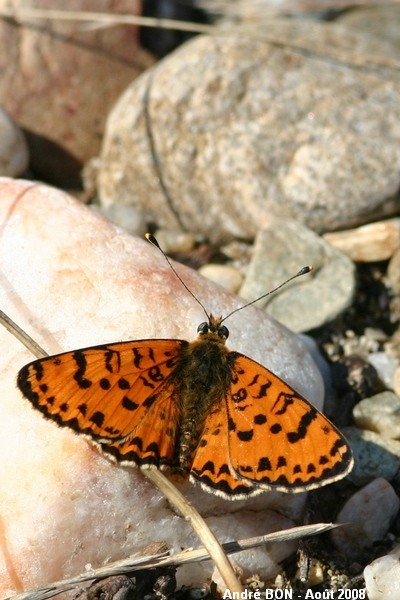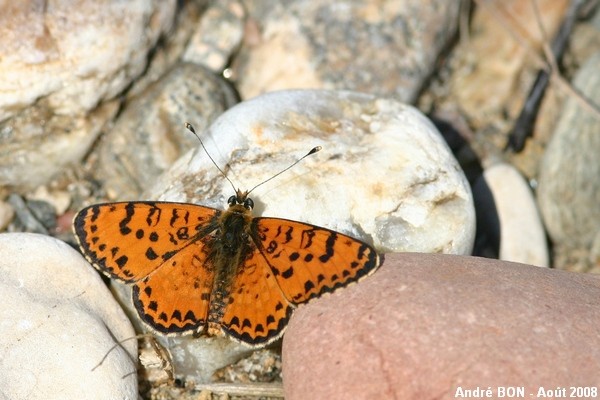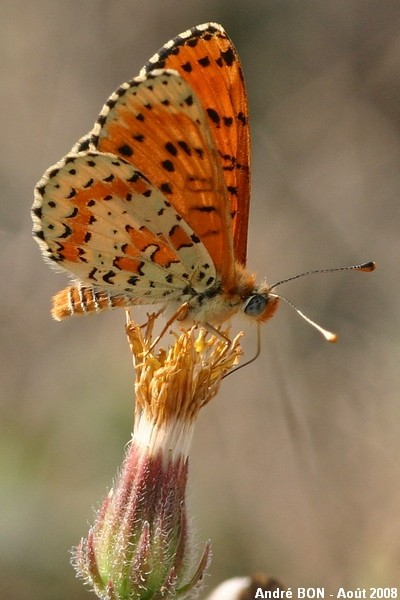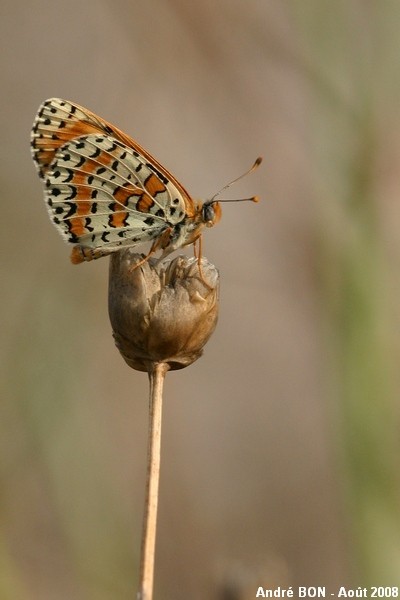





| Spotted Fritillary (Melitaea didyma (Esper, 1777)) |






|
|
Scientific name: Melitaea didyma (Esper, 1777) Common name: Spotted Fritillary French name: Mélitée orangée, Damier orangé Order: Lepidoptera Suborder: Rhopalocera Family: Nymphalidae Subfamily: Nymphalinae Wingspan: 30-44 mm. Biotope: Meadows and clearings, open a dry areas. Geographic area: Southern Europe, North Africa, Central Asia. Flight time: May to September. Number of generations : 2-3. Caterpillar: The caterpillar shows many pointed spines. It is a greyish white colour with orange longitudinal stripes and some black lines. Host plant: Plantains (Plantago), Veronica, Foxgloves (Digitalis), Valerians (Valeriana), Mulleins (Verbascum), Snapdragons (Antirrhinum), Toadflaxes (Linaria), Stachys. |
The upper side of the male's wings is reddish orange with quadrangular black marks. The upper side of the female's wings is a duller colour with a greyish scaling, better marked on the fore wings. The under side of the hind wings is pale yellow with two orange stripes. The basal orange stripe is wavy but continuous. There is a row of rounded marginal black marks. These two last points are important keys to tell the Spotted Fritillary apart from the numerous similar species. |
| [To know more about the Spotted Fritillary] [Next picture] [Top] |

|
I have observed this Spotted Fritillary while hiking in the Esterel mountains in the south of France. |
| [To know more about the Spotted Fritillary] [Next picture] [Previous picture] [Top] |

|
I have shot this picture next to bank of the Cèze river near the nice village of Montclus. |
| [To know more about the Spotted Fritillary] [Next picture] [Previous picture] [Top] |

|
I have observed a great number of Spotted Fritillaries during my summer stay in southern Ardèche and northern Gard in August 2008. |
| [To know more about the Spotted Fritillary] [Next picture] [Previous picture] [Top] |

|
After having observed Spotted Fritillaries landed on the ground, here is one on a flower. This is more photogenic. |
| [To know more about the Spotted Fritillary] [Next picture] [Previous picture] [Top] |

|
I have found these Spotted Fritillary mating by chance. The colours of the underside of the wings provide an efficient camouflage among dry vegetation. |
| [To know more about the Spotted Fritillary] [Previous picture] [Top] |

|
I had to contort myself to find the right angle of view so that I get a uniform background. |